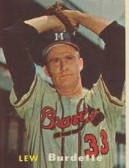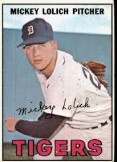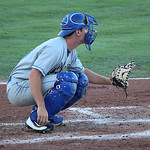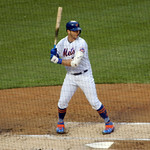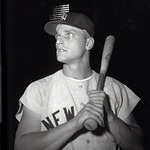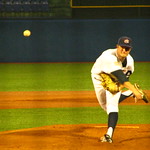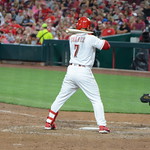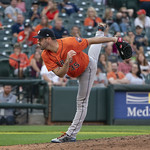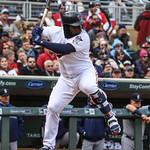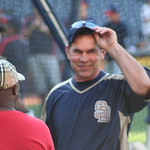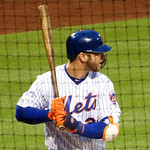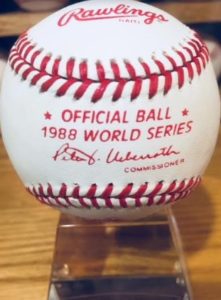 As the Astros and the National prepare to face off in the 2019 World Series, Baseball Roundtable would like to take a look at some of the single-game and single World Series targets the players can shoot at. But first a few records that BBRT finds of particular interest.
As the Astros and the National prepare to face off in the 2019 World Series, Baseball Roundtable would like to take a look at some of the single-game and single World Series targets the players can shoot at. But first a few records that BBRT finds of particular interest.
- While four three players have hit three home runs in a World Series game, only the Yankees’ Babe Ruth (appropriately) accomplished the feat twice – October 6, 1926 and October 9, 1928.
- Babe Ruth also holds the record for the most innings pitched in a single World Series Game- going 14 innings for the Red Sox in a complete-game, six-hit, 2-1 win ( over the Brooklyn Robins) on October 9, 1916.
- The Giants’ Willie Mays grounded into a World Series single-game record three double plays on October 8, 1951, as his Giants lost to the Yankees 6-2. Mays came up four times (with a total of five runners on base) and delivered three double plays and a fly out.
NO TAKE SIGN HERE
In the October 18, 1977 World Series game in which Yankee Reggie Jackson hit a record-tying three home runs (fourth, fifth and eight innings), he hit each home run on the first pitch of his at bat. That’s three long ball on three consecutive pitches. Jackson ended the day three-for-three (a walk in his first plate appearance), with four runs scored and five RBI, as the Yankees topped the Dodgers 8-4.
- Three players – The Yankees’ Bobby Richardson (1960 WS), Cardinals’ Lou Brock (1968 WS) and Red Sox’ Marty Barrett – share the record for base hits in a single World Series (13) – and all three collected their Baker’s Dozen safeties in losing causes.
- While 13 pitchers have recorded three wins in a single World Series, only the Giants’ Christy Mathewson threw complete-game shutouts in single World Series (1905 against the Philadelphia Athletics). In his three starts, Mathewson threw 27 innings, giving up just 13 hits and one walk, while fanning eight.
- Lou Brock of the Cardinals is the only player to steal seven bases in a single World Series – and he did it twice. In the 1967 World Series, Brock stole seven bases in seven attempts. He tied his own record with seven steals (in nine attempts) in the 1968 World Series.
THIS ONE’S ON US
On October 23, 2002, the Angels wanted little to do with Giants’ slugger Barry Bonds – gifting him a single-game World Series record three intentional walks. They came: in the first inning, with runners and first and third and one out; in the third, with runners on second and third and one out; and in the fifth, with a runner on second and one out. In his only other plate appearance, Bonds grounded out to first in the seventh inning. The Giants won the game 4-3.
- In the 2002 World Series (Angels/Giants), the Giants’ Barry Bonds drew a single-World Series’ record 13 walks (in 30 plate appearances).
- In the Opening Game of the 1968 World Series (October 8), the Cardinals’ Bob Gibson (facing the Tigers) struck out a World Series’ single-game record 17 hitters – getting each of the nine players in the Tigers’ starting line up at least once. Gibson threw a five-hit shutout, as St. Louis won 4-0.
- The Dodgers’ Cody Bellinger, 2017 NL Rookie of the Year, struck out a World Series’ record 17 times (28 t bats) in the 2017 World Series (versus the Astros). This included two games in which he fanned four times in four at bats.
- On October 22, 2011, as the Cardinals topped the Rangers 16-7, Albert Pujols collected a World Series’ single-game record 14 total bases – three home runs and two singles in six at bats.
YOU’VE GOT TO EARN YOUR WAY ON
Carl Mays (1921 Yankees) pitched the most innings in a single WS without issuing a walk – 26. That series, he went 1-2, 1.73 in thee complete-game starts, as the Yankees lost to the Giants five games-to-three. Just six pitchers have walked zero batters while pitching at least ten innings in a World Series.
- While the 1990 World Series (Reds/A’s) lasted only four games, Reds’ CF Billy Hatcher made the most of them – putting up a World Series’ record .750 batting average (9 hits in 12 at bats). He also had two walks and one hit-by-pitch – putting on base in 12 of 15 plate appearance for a Series’ record .800 on-base percentage.
HE DOES LIKE THE BIG STAGE
Billy Hatcher, a career (12-seasons … 1984-95) .264 hitter, was pretty darn good in the post season. In 14 post-season games, he hit .404.
- In the 1903 World Series – a best five-of-nine affair that went eight games – the Pirates’ Deacon Phillipe started and completed a record five games (in 13 days) – going 3-2, 3.07.
Now, let’s look at some World Series Targets
—-SINGLE-SEASON WORLD SERIES RECORDS—
HITTING
Batting Average – .750
Billy Hatcher, Reds, 1990 (12-for-15).
On-Base Percentage – .800
Billy Hatcher, Reds, 1990
Slugging percentage – 1.727
Lou Gehrig, Yankees, 1928
Home Runs – 5
Reggie Jackson, Yankees, 1977
Chase Utley, Phillies, 2009
George Springer, Astros, 2017
Total Bases – 29
George Springer, Astros, 2017
Runs Batted In – 12
Bobby Richardson, Yankees, 1960
Runs Scored – 10
Reggie Jackson, Yankees, 1977
Paul Molitor, Blue Jays, 1990
Doubles – 6
Pete Fox, Tigers, 1934
Triples – 4
Tommy Leach, Pirates, 1903
Walks – 13
Barry Bonds, Giants, 2002
Batter’s Strikeouts – 17
Cody Bellinger, Dodgers, 2017
Stolen Bases – 7
Lou Brock, Cardinals, 1967
Lou Brock Cardinals, 1968
PITCHING
Earned Run Average – 0.00
There are more than a dozen players with at least ten innings pitched in a World Series with a 0.00 ERA. Only two have put up perfect ERA while tossing 27 innings in a single Fall Classic.
Christy Mathewson, Giants, 1905
Waite Hoyte, Yankees, 1921
Wins – 3
Thirteen players.
For a look at players who have earned three complete-game victories in a single World Series, click here.
Strikeouts – 35
Bob Gibson, Cardinals, 1968
Roger Clemens holds the single-WS record for strikeouts-per-nine innings at 12.8 (19 strikeouts in 13.1 innings pitched) – in two starts for the Yankees in 2001.
Complete-Game Shutouts – 3
Christy Mathewson, Giants, 1905
Complete Games – 5
Deacon Phillippe, Pirates, 1903 (best five-of-nine)
Game Appearances – Seven
Darold Knowles, A’s, 1973
Brandon Morrow, Dodgers, 2017
Innings Pitched – 44
Deacon Phillippe, Pirates, 1903 (best five-of-nine)
Saves – 4
John Wetteland, Yankees, 1996
—-SINGLE-GAME WORLD SERIES RECORDS—
BATTING
Home Runs – 3
Babe Ruth, Yankees – October 6, 1926
Babe Ruth Yankees October 9, 1928
Reggie Jackson, Yankees – October 18, 1977
Albert Pujols, – Cardinals, October 22, 2011
Pablo Sandoval, Giants – October 24, 2012
Runs Batted In – 6
Bobby Richardson, Yankees – October 8, 1960
Hideki Matsui, Yankees – November 4, 2009
Albert Pujols, Cardinals – October 22, 2011
Addison Russell, Cubs – November 1, 2016
Runs Scored – 4
Eleven players.
Hits – Five
Paul Molitor, Brewers – October 12, 1982
Albert Pujols, Cardinals – October 22, 2011
Doubles – 4
Frank Isbell, White Sox – October 13, 1906
Triples – 2
Six Players.
Total Bases – 14
Albert Pujols, – October 22, 2011
Walks – Four
Seven Players
Intentional Walks – 3
Barry Bonds, Giants – October 23, 2002
PITCHING
Of course, Yankee Don Larsen’s 1956 perfect game gives him a piece of most of these records like fewest hits, lowest WHIP, fewest walks, etc. So, here a sampling of a few not covered by Larsen’s “perfecto.” Side note: Larsen had gone 11-5, 3.26 for the Yankees in 1956 and had been knocked out in the second inning of his previous start that World Series (1 2/3 IP, one hit, four walks, four unearned runs.)
Innings Pitched – 14
Babe Ruth – October 9, 1916
Strikeouts – 17
Bob Gibson, Cardinals – October 2, 1968
Strikeouts by A Reliever – 11
Moe Drabowsky, Orioles – October 5, 1966 (6 2/3 innings)
Most Hits Allowed – 15
Walter Johnson, – October 15, 1925
Johnson pitched a complete game (eight innings) – giving up 15 hits, nine runs (five earned), with one walk and three strikeouts – as his Senators lost 9-7 to the Pirates. Note: Johnson took a 7-6 lead into the bottom of the eighth inning. He retired the first two batters in the eighth and then gave up three runs on three doubles and a walk, with an error by the shortstop tossed in.
Most Home Runs Allowed – 4
Charlie Root, Cubs – October 1, 1932
Junior Thompson, Reds – October 7, 1939
Dick Hughes, Cardinals – October 11, 1967
Primary Resources: Baseball-Reference.com; Baseball-Almanac.com; The World Series (Dial Press/Sports Products, Inc.)
BASEBALL ROUNDTABLE ON THE TOP 100 BASEBALL BLOG LIST
 Baseball Roundtable is on the Feedspot list of the Top 100 Baseball Blogs. To see the full list, click here.
Baseball Roundtable is on the Feedspot list of the Top 100 Baseball Blogs. To see the full list, click here.
I tweet baseball @DavidBBRT
Follow/Like Baseball Roundtable’s Facebook Page here. More baseball commentary; blog post notifications; PRIZES.
Member: Society for American Baseball Research (SABR); The Baseball Reliquary; The Negro Leagues Baseball Museum.
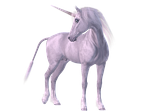 The “prelims” are over and we’ve got our match up for the Main Event – the Astros versus the Nationals in the World Series. As I contemplate the rosters of this pair of worthy opponents, I am led to wonder if, in the coming days, we will see that increasingly rare “unicorn” – a World Series complete game. After all, we are looking at some quality starting pitchers in Justin Verlander, Gerrit Cole and Zack Greinke on one hand and Max Scherzer, Stephen Strasburg and Patrick Corbin on the other. They have six Cy Young Awards among them – and, in 2019, this group won a combined 102 games (just 36 losses), put up a 2.75 earned run average and 1,547 strikeouts in 1,228 innings pitched.
The “prelims” are over and we’ve got our match up for the Main Event – the Astros versus the Nationals in the World Series. As I contemplate the rosters of this pair of worthy opponents, I am led to wonder if, in the coming days, we will see that increasingly rare “unicorn” – a World Series complete game. After all, we are looking at some quality starting pitchers in Justin Verlander, Gerrit Cole and Zack Greinke on one hand and Max Scherzer, Stephen Strasburg and Patrick Corbin on the other. They have six Cy Young Awards among them – and, in 2019, this group won a combined 102 games (just 36 losses), put up a 2.75 earned run average and 1,547 strikeouts in 1,228 innings pitched.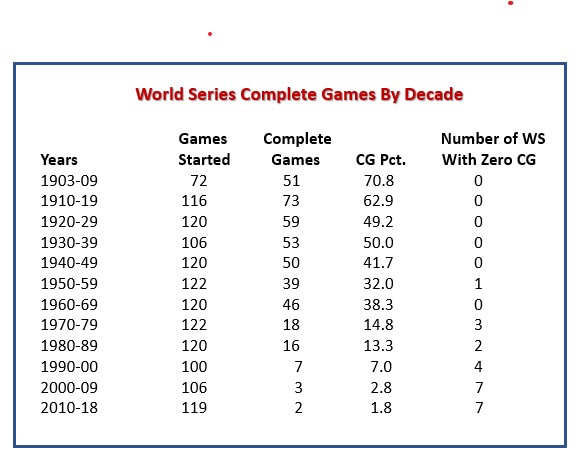
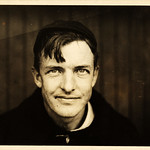


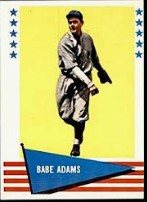

![[Jack Coombs, Brooklyn NL (baseball)] (LOC) by The Library of Congress Jack Coombs photo](https://baseballroundtable.com/wp-content/uploads/2019/10/14960294390_c575790e9b_q_Jack-Coombs.jpg)

